
Digital dashboards that help you identify deviations and make the right decisions.

Capture your deviations and turn them into improvements
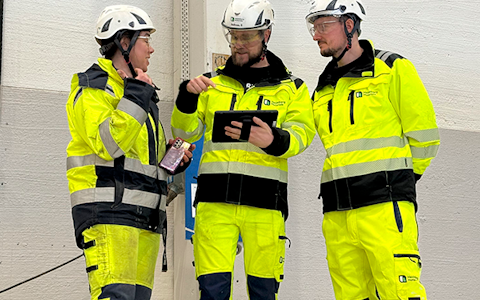
Continuous improvement, Kaizen boards, PDCA and other tools.

All your team’s tasks, neatly organized in one weekly view.
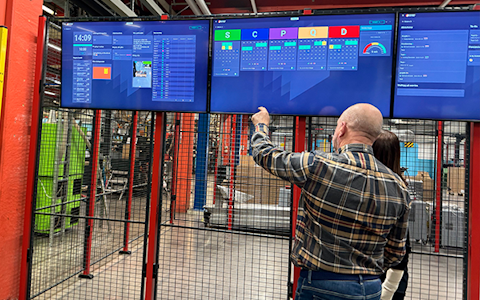
Improve key performance indicators within your specific focus areas with our SQCDP board.

Use the PDCA cycle as a tool to improve both quality and processes

Digital tools for 5S work, recurring audits, and a well-organized workplace.
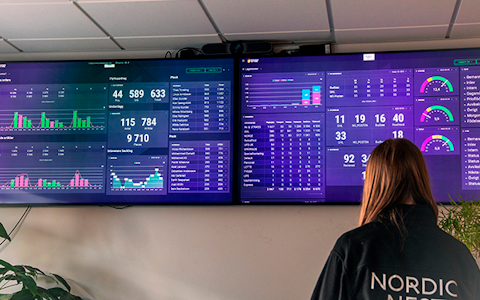
Visualize KPIs and communicate effectively throughout the entire organization.

Basic project management and activity boards.
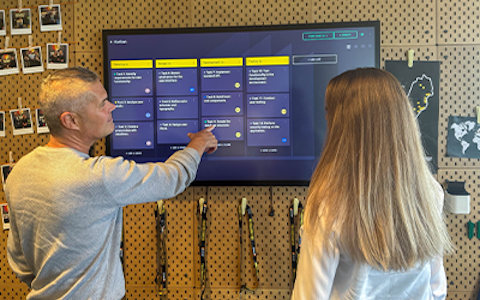
Kanban is a powerful method for visualizing, managing, and optimizing workflows.

Digital dashboards for takt time flow with takt time counter and stop time log.
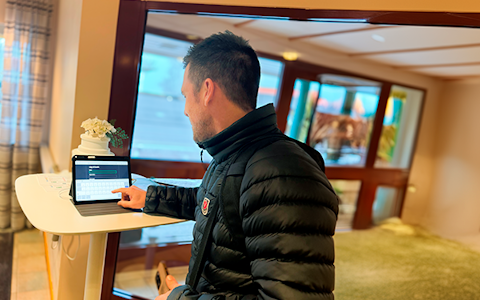
Digital visitor registration provides full control over all planned and executed visits to your business.
In this video, we’ll show you how easy it is to get started with our Week planner feature in Boards on Fire. It’s a perfect tool to give your entire team clarity on what needs to be done, who’s responsible, and when tasks should be completed.
Weekplanner provides an overview calendar view where you can see all the days of the week and which tasks are assigned to each person. It’s perfect for planning, distributing, and following up on tasks within your team – and it also makes it easy to spot if something is delayed or marked as high priority.
To create a Week planner, go to the organization where you want it set up. Then add an Activity Board and select the option Week planner.
Now it’s time to choose which users should be included.
Click the settings button in the top right corner – here you can:
• Change the name of your Week planner
• Decide which types of tasks should be displayed, for example: deviations, entities, improvements or to-do lists
• Choose whether weekends should be shown
• Add users
All users in your home organization are added automatically – but you can easily remove or add users, both inside and outside of the home organization.
Have you made changes and want to include all users in the home organization? You can quickly do that here as well.
You can also filter tasks within the Week planner board.
• Under Persons, you select which users should be shown by simply checking or unchecking them.
• Under Sources, you decide which types of tasks should be displayed.
• Under All, you can choose to show all tasks, only completed ones, or only the open ones.
If you want to focus on what’s most important, click the priority button to display only the tasks marked as prioritized.
To add a new task, click Add in the top right corner.
Here you can fill in:
• A title for the task
• Who it should be assigned to
• Start and end date
• You can also mark the task as started or done
If you’d like to provide more details, you can add them under Extra Information. Here, you can also mark the task as prioritized – it will then be marked with a red flag.
Below the information box, you can see where the task was created and who created it.
If a task isn’t completed by its due date, it will turn red. Once it’s finished, it turns green instead.
In the bottom right corner, you’ll get a summary of your Week planner: the total number of tasks and how many are completed.
If there are unfinished tasks from the previous week, a yellow banner will appear above the Week planner, letting you know how many tasks remain open. Clicking the banner will display these tasks. From here, you can open a task and mark it as completed. If the tasks are still not done, you can click Move all tasks and easily move them to Today's date or to No date.
A key strength is that tasks follow the person. For example, if you assign a task to Person 1 in Department 1’s Week planner, it will also appear in Department 2’s Week planner – as long as that person is included in the second board.
Now your Week planner is ready to use! With this view, you get a clear overview of the week and can easily plan, distribute, and follow up on work across your team.
Free web demo